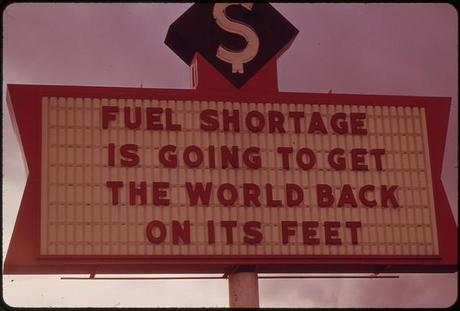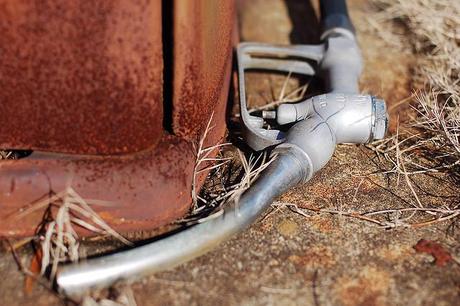What is the Energy Crisis?
The energy crisis is the concern that the world’s demands on the limited natural resources that are used to power industrial society are diminishing as the demand rises. These natural resources are in limited supply. While they do occur naturally, it can take hundreds of thousands of years to replenish the stores. Governments and concerned individuals are working to make the use of renewable resources a priority, and to lessen the irresponsible use of natural supplies through increased conservation.
The energy crisis is a broad and complex topic. Most people don’t feel connected to its reality unless the price of gas at the pump goes up or there are lines at the gas station. The energy crisis is something that is ongoing and getting worse, despite many efforts. The reason for this is that there is not a broad understanding of the complex causes and solutions for the energy crisis that will allow for an effort to happen that will resolve it.
According to the Wikipedia,
“An energy crisis is any great bottleneck (or price rise) in the supply of energy resources to an economy. In popular literature though, it often refers to one of the energy sources used at a certain time and place, particularly those that supply national electricity grids or serve as fuel for vehicles. “

How Real is the Energy Crisis?
During election years there is a renewed debate on how “real” the energy crisis is in the world. One side will always say it is based on faulty science and politics; the other will say that the other side is basing their findings on junk science and political interests. The best way to sum up the reality of the energy crisis is that you cannot have growing demands on limited resources without eventually running out of the resource. That is just common sense. What is really at play in the discussion about how real the energy crisis is concerns the perception of responsibility for the future. There is no real energy crisis if you are not concerned about life after your time on Earth is gone. There is a very real energy crisis if you care about the future that the next generations will inherit.
Causes of the Energy Crisis
It would be easy to point a finger at one practice or industry and lay the blame for the entire energy crisis at their door, but that would be a very naive and unrealistic interpretation of the cause of the crisis.
1. Overconsumption: The energy crisis is a result of many different strains on our natural resources, not just one. There is a strain on fossil fuels such as oil, gas and coal due to overconsumption – which then in turn can put a strain on our water and oxygen resources by causing pollution.
2. Overpopulation: Another cause of the crisis has been the steady increase in the world’s population and its demands for fuel and products. No matter what type of food or products you choose to use – from fair trade and organic to those made from petroleum products in a sweatshop – not one of them is made or transported without a significant drain on our energy resources.
3. Poor Infrastructure: Aging infrastructure of power generating equipment is yet another reason for energy shortage. Most of the energy producing firms keep on using outdated equipment that restricts the production of energy. It is the responsibility of utilities to keep on upgrading the infrastructure and set a high standard of performance.
4. Unexplored Renewable Energy Options: Renewable energy still remains unused is most of the countries. Most of the energy comes from non-renewable sources like coal. It still remains the top choice to produce energy. Unless we give renewable energy a serious thought, the problem of energy crisis cannot be solved. Renewable energy sources can reduce our dependance on fossil fuels and also helps to reduce greenhouse gas emissions.
5. Delay in Commissioning of Power Plants: In few countries, there is a significant delay in commissioning of new power plants that can fill the gap between demand and supply of energy. The result is that old plants come under huge stress to meet the daily demand for power. When supply doesn’t matches demand, it results in load shedding and breakdown.
6. Wastage of Energy: In most parts of the world, people do not realize the importance of conserving energy. It is only limited to books, internet, newspaper ads, lip service and seminars. Unless we give it a serious thought, things are not going to change anytime sooner. Simple things like switching off fans and lights when not in use, using maximum daylight, walking instead of driving for short distances, using CFL instead of traditional bulbs, proper insulation for leakage of energy can go a long way in saving energy. Read here about 151 ways of saving energy.
7. Poor Distribution System: Frequent tripping and breakdown are result of a poor distribution system.
8. Major Accidents and Natural Calamities: Major accidents like pipeline burst and natural calamities like eruption of volcanoes, floods, earthquakes can also cause interruptions to energy supplies. The huge gap between supply and demand of energy can raise the price of essential items which can give rise to inflation.
9. Wars and Attacks: Wars between countries can also hamper supply of energy specially if it happens in Middle East countries like Saudi Arabia, Iraq, Iran, Kuwait, UAE or Qatar. That’s what happened during 1990 Gulf war when price of oil reached its peak causing global shortages and created major problem for energy consumers.
10. Miscellaneous Factors: Tax hikes, strikes, military coup, political events, severe hot summers or cold winters can cause sudden increase in demand of energy and can choke supply. A strike by unions in an oil producing firm can definitely cause an energy crisis.

Possible Solutions of the Energy Crisis
Many of the possible solutions are already in place today, but they have not been widely adopted.
1. Move Towards Renewable Resources: The best possible solution is to reduce the world’s dependence on non-renewable resources and to improve overall conservation efforts. Much of the industrial age was created using fossil fuels, but there is also known technology that uses other types of renewable energies – such as steam, solar and wind. The major concern isn’t so much that we will run out of gas or oil, but that the use of coal is going to continue to pollute the atmosphere and destroy other natural resources in the process of mining the coal that it has to be replaced as an energy source. This isn’t easy as many of the leading industries use coal, not gas or oil, as their primary source of power for manufacturing.
2. Buy Energy Efficient products: Replace traditional bulbs with CFL’s and LED’s. They use less watts of electricity and last longer. If millions of people across the globe use LED’s and CFL’s for residential and commercial purposes, the demand for energy can go down and an energy crisis can be averted.
3. Lighting Controls: There are a number of new technologies out there that make lighting controls that much more interesting and they help to save a lot of energy and cash in the long run. Preset lighting controls, slide lighting, touch dimmers, integrated lighting controls are few of the lighting controls that can help to conserve energy and reduce overall lighting costs.
4. Easier Grid Access: People who use different options to generate power must be given permission to plug into the grid and getting credit for power you feed into it. The hassles of getting credit of supplying surplus power back into the grid should be removed. Apart from that, subsidy on solar panels should be given to encourage more people to explore renewable options.
5. Energy Simulation: Energy simulation software can be used by big corporates and corporations to redesign building unit and reduce running business energy cost. Engineers, architects and designers could use this design to come with most energy efficient building and reduce carbon footprint.
6. Perform Energy Audit: Energy audit is a process that helps you to identify the areas where your home or office is losing energy and what steps you can take to improve energy efficiency. Energy audit when done by a professional can help you to reduce your carbon footprint, save energy and money and avoid energy crisis.
7. Common Stand on Climate Change: Both developed and developing countries should adopt a common stand on climate change. They should focus on reducing greenhouse gas emissions through an effective cross border mechanism. With current population growth and over consumption of resources, the consequences of global warming and climate change cannot be ruled out. Both developed and developing countries must focus on emissions cuts to cut their emission levels to half from current levels by 2050.
What is Being Done Today?
There are many global initiatives that are working towards resolving the energy crisis. This has taken the form of increased regulation and restriction on carbon emissions, the promotion of greener manufacturing and construction projects, the funding of research into hybrid technologies and more sustainable technologies and more. Locally, more communities are seeing beyond the recycle bin and recognizing that how the community uses their local resources is important too. More community gardens, parks and farmer’s markets are springing up not only as a means of introducing more sustainable elements into people’s, but as an important part of educating the public about the importance of resources.

